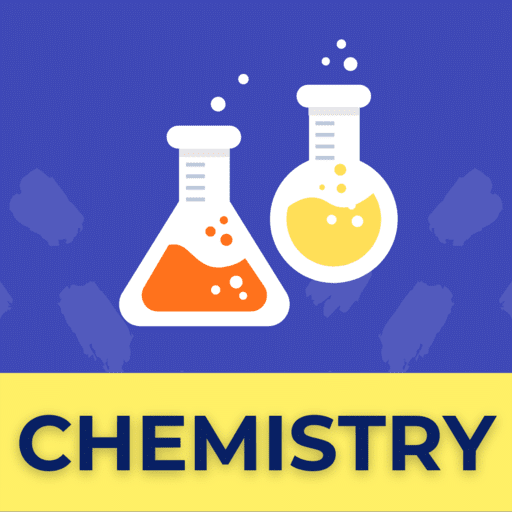Class 6 Science Chapter 2 Case Based Questions - Sorting Materials into Groups
Case 1: Categorizing Objects
A group of students is conducting an experiment to categorize objects based on certain criteria. They have a collection of objects, including rubber balls, apples, wooden chairs, glass marbles, and plastic toys. They want to categorize these objects.
Q1: Which criterion can be used to categorize these objects?
(a) Shape
(b) Color
(c) Purpose
(d) All of the above
Ans: The correct answer is (d) All of the above.
Objects can be categorized based on their shape, color, or purpose. In this case, you can categorize these objects based on all three criteria if needed.
Q2: Give an example of an object that can be categorized based on its shape.
Ans: An example of an object that can be categorized based on its shape is a rubber ball.
Q3: Give an example of an object that can be categorized based on its color.
Ans: An example of an object that can be categorized based on its color is a red apple.
Q4: Give an example of an object that can be categorized based on its purpose.
Ans: An example of an object that can be categorized based on its purpose is a wooden chair (used for sitting).
Q5: Which of the following objects can be categorized based on their color?
(a) Glass marbles
(b) Wooden chairs
(c) Plastic toys
(d) Rubber balls
Ans: The correct answer is (a) Glass marbles.
Glass marbles can be categorized based on their color as they come in various colors.
Q6: Which criterion can be used to categorize objects like bicycles and bullock carts?
(a) Shape
(b) Color
(c) Purpose
(d) Material
Ans: The correct answer is (c) Purpose.
Bicycles and bullock carts can be categorized based on their purpose, which is transportation.
Case 2: Properties of Materials
A group of students is exploring the properties of different materials. They are examining materials such as wood, iron, copper, and glass.
Q7: What characteristic of materials is related to their appearance?
Ans: The characteristic related to the appearance of materials is their visual look or how they appear. Different materials have distinct appearances.
Q8: Give an example of a material with a shiny or lustrous appearance.
Ans: An example of a material with a shiny or lustrous appearance is gold.
Q9: What does it mean for a material to be considered hard?
Ans: A material is considered hard if it is difficult to compress or scratch.
Q10: Name a material that is considered soft.
Ans:4: Cotton is an example of a soft material.
Q11: Which of the following materials can be easily scratched with a metal key?
(a) Iron
(b) Glass
(c) Wood
(d) Copper
Ans: The correct answer is (c) Wood.
Wood is a material that can be easily scratched with a metal key.
Q12: Which material is known for its shiny or lustrous appearance but can lose its shine when exposed to air and moisture?
(a) Copper
(b) Gold
(c) Aluminium
(d) Iron
Ans: The correct answer is (d) Iron.
Iron is known for its shiny appearance but can lose its shine when exposed to air and moisture.
Case 3: Solubility of Substances
A chemistry class is discussing the solubility of substances in water. They are investigating which substances dissolve in water and which do not.
Q13: Define solubility in water.
Ans: Solubility in water refers to the ability of a substance to completely dissolve or vanish in water.
Q14: Give an example of a substance that is soluble in water.
Ans: An example of a substance that is soluble in water is table salt (sodium chloride).
Q15: Name a substance that is insoluble in water.
Ans: Sand is an example of a substance that is insoluble in water.
Q16: Explain why the solubility of substances in water is an important characteristic.
Ans: Solubility in water is important because water is considered a universal solvent. It plays a crucial role in various chemical and biological processes.
Q17: Which of the following substances is insoluble in water?
(a) Sugar
(b) Salt
(c) Sand
(d) Lemon juice
Ans: The correct answer is (c) Sand.
Sand is insoluble in water.
Q18: Why is the solubility of substances in water considered an important property?
(a) Because water is a rare solvent.
(b) Because water is a universal solvent.
(c) Because water is colorless.
(d) Because water is dense.
Ans: The correct answer is (b) Because water is a universal solvent.
Water's ability to dissolve a wide range of substances is crucial in various scientific and practical applications.
|
100 videos|261 docs|49 tests
|
FAQs on Class 6 Science Chapter 2 Case Based Questions - Sorting Materials into Groups
| 1. What is the importance of categorizing objects? |  |
| 2. How are objects categorized? |  |
| 3. What are the properties of materials? |  |
| 4. How can we determine the solubility of substances? |  |
| 5. Why is understanding the solubility of substances important? |  |


























